Uncertain about what “branding” means? Not to worry as there are various branding agency in the markets! Even for those who have studied marketing, the idea of branding is one of those ambiguous and easily misunderstood marketing notions.
We’re going to examine “what is branding” today and attempt to give a basic explanation using concrete examples. We must first understand what products and brands are in order to comprehend the concept of branding. Move along!
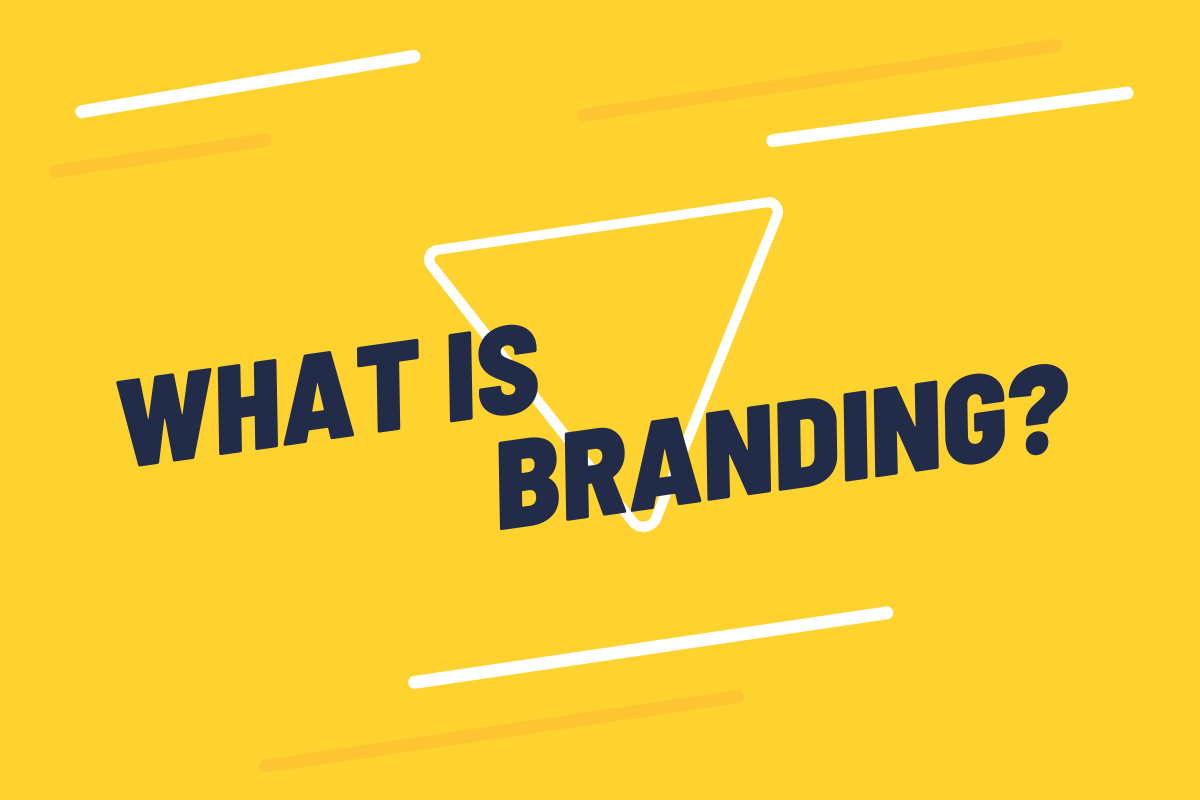
By building and defining a brand in consumers’ perceptions, branding is the process of imparting meaning to a certain organization, company, product, or service. By defining what this specific brand is and is not, businesses can help people immediately recognize and experience their brand and offer them a reason to prefer their products over those of the competition. By consistently delivering a product that is in line with what the brand promises, the goal is to draw in and keep the support of devoted customers as well as other stakeholders.
All About Branding & How is branding accomplished?
A person’s first impression of a certain firm or product is its brand. Everybody invents their own version of it, and some companies become more or less well-liked depending on how customers feel about them.
Companies frequently employ a variety of tools to develop and shape their brands. Branding, for instance, can be accomplished by:
Brand definition: Goal, Values, and Pledge
- A statement describing your brand
- Name, tone of voice, and visual identity design (which includes the logo design, color scheme, and typographies) are all components of a brand.
- Communications and advertising: TV, radio, publications, billboards, websites, mobile apps, etc.
- Partnerships and sponsorships
- Goods and packaging design
- in-store encounter
- Workplace history and management philosophy
- Consumer assistance
- Pricing policy
Who is Affected by It?
Customers:
As was said before, a brand offers customers a decision-making shortcut when they are unsure about the same product from many manufacturers.
Employees/Shareholders/Third Parties:
Successful branding techniques not only help buyers tell apart comparable products, but they also improve a company’s reputation. Numerous people may be impacted by this asset, including customers, staff members, shareholders, investors, providers, and distributors. For instance, you would probably not want to work for a brand if you dislike it or don’t feel a connection to it. However, you would undoubtedly want to work for the company and be a part of its universe if you feel like it understands you and provides things that inspire you.
Branding in-person can be significantly different from branding online since in-person considerations like product placement and props can affect how customers perceive your brand. Customers who shop in-person have a more immersive brand experience than those who do so online since they can move about and pick up items. Of course, some aspects of branding are the same in-store and online. These contain logos and images that are recognizable.
A trait or group of features that make one company apart from another is known as a brand. Typically, a brand is made up of a name, tagline, logo or symbol, design, brand voice, and other elements. It also describes the total encounter a consumer has with a business, whether they are a shopper, a client, a following on social media, or just a casual customer.
One of the most famous logos and color schemes in the world, for instance, belongs to the Coca-Cola company. Over a century has passed since the inception of the iconic red and white writing, eye-catching artwork, and distinctive font. The Coca-Cola brand has endured through the years and is proof of the effectiveness of persistent, well-loved branding. Having said that, branding is an iterative process that necessitates connecting with the soul of both your customers and your company.
Branding Terminology
You should be aware of the following other brand-related buzzwords. They serve as additional evidence of the significance and benefit of business branding.
- Brand Recognition: Brand awareness is the measure of how well-known your company is among your target market and the wider public. Brands with a high level of brand awareness are described as “trending,” “buzz-worthy,” or “popular.” Because people cannot contemplate buying from your brand if they are unaware of it, brand awareness is crucial.
- Extension of Brand: When businesses “stretch” their brand to create new products in new markets and industries, this is known as brand extension.
- Corporate Identity: Your company’s personality and the promise you offer to your clients are expressed through your brand identity. It’s the impression you want your customers to have of your brand after they interact with it. Your brand identity often consists of your core beliefs, the way you present your goods or services, and the emotions you want customers to experience.
- Management of A Brand: Brand management is the procedure for developing and preserving your brand. Both the tangible (style manual, packaging, color palette) and intangible (how it is viewed by your target market and client base) aspects of your brand must be managed. Your brand should be treated as though it were a living, breathing asset.
- Brand Awareness: Brand recognition refers to how well a consumer (preferably in your target market) can recognize and identify your brand through your logo, tagline, jingle, packaging, or advertising without first seeing your company name. This idea is related to brand recall, which is the capacity to recall a brand without any visual or audible cues.
- Brand Trust: The level of consumer and customer trust in your brand is referred to as brand trust. Do you keep the promises you make in your marketing? Do you offer exceptional customer service and sales? These actions can build customer trust, which is crucial in a society where just 25% of people have faith in major corporations.
- Valuation of A Brand: The commercial value of your brand is determined by how consumers perceive, recognize, and trust it. This idea and brand equity go hand in hand. A strong brand may make your company priceless to shareholders, investors, and potential customers.
Types of Branding
How can you tell which brand strategy is best for your company? The greatest method for a business to leave its imprint on the business world is to employ one of the many branding tactics available, just as there are numerous sorts of logos that can be used for businesses.
We’ve outlined the primary categories of branding to assist you in making the kinds of choices required to develop a viable brand.
1. Personal Branding
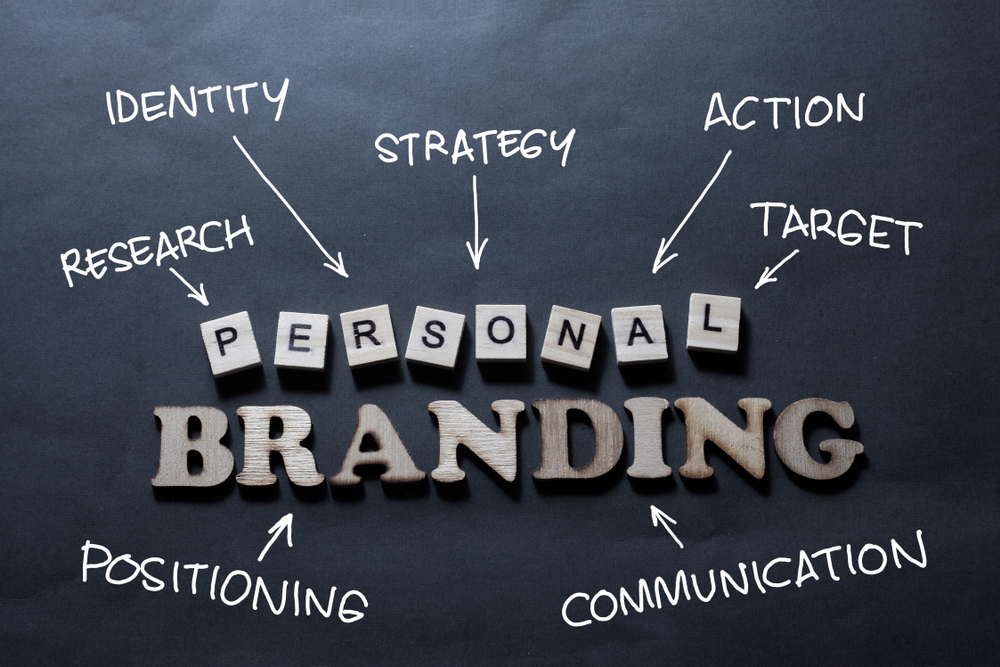
In contrast to branding an entire company, this typically refers to branding for the individual. Celebrities, politicians, and even digital marketers who wish to uphold a positive public image should prioritize personal branding (usually because it benefits them in their career to be endorsed).
The ability to reach large audiences while “speaking” from a personal platform makes social media an effective tool for developing a personal brand. Both businessmen Tony Robbins and Neil Patel are excellent instances of personal branding done well; each of them makes significant investments in his internet presence and has established himself as an authority in his respective industry.
In essence, it is the way you represent your company to the outside world that guarantees that your target market is aware of who you are, what you stand for, and why they should choose you over your rivals.
Being your own marketer is a key component of personal branding, not only marketing. To command respect and confidence from your peers and clients, you must stand up for yourself and your company.
- The importance of Personal Branding: Making an impact is more crucial than ever at a time when people’s attention spans are dwindling by the minute. The best way to accomplish this is through developing a strong and enduring brand identity.
- Why is Personal Branding Important?: In today’s cutthroat employment market, having a strong personal brand is more crucial than ever. What people think and say about you while you’re not around creating your personal brand. Your career can be made or broken by your reputation.
- Brings About the Opportunity: Everyone fights for the same chances, clients, and employment in our competitive environment. Possessing a strong personal brand is crucial for standing out from the competition. The distinctive set of abilities and life experiences that make you who you are together form your personal brand. It is what distinguishes you from others and what makes you special.
- Your Audience will have More Faith in You: Making an identity for oneself as a person or a corporation is called personal branding. This entails creating a clear and consistent brand identity, message, and presence both online and offline. There are numerous psychological justifications for why developing your personal brand may be beneficial. One benefit is that it might aid in establishing trust with your audience. People are more likely to trust you if they feel like they know who you are and what you stand for. They believe they have a relationship with you, which explains why.
2. Co-branding
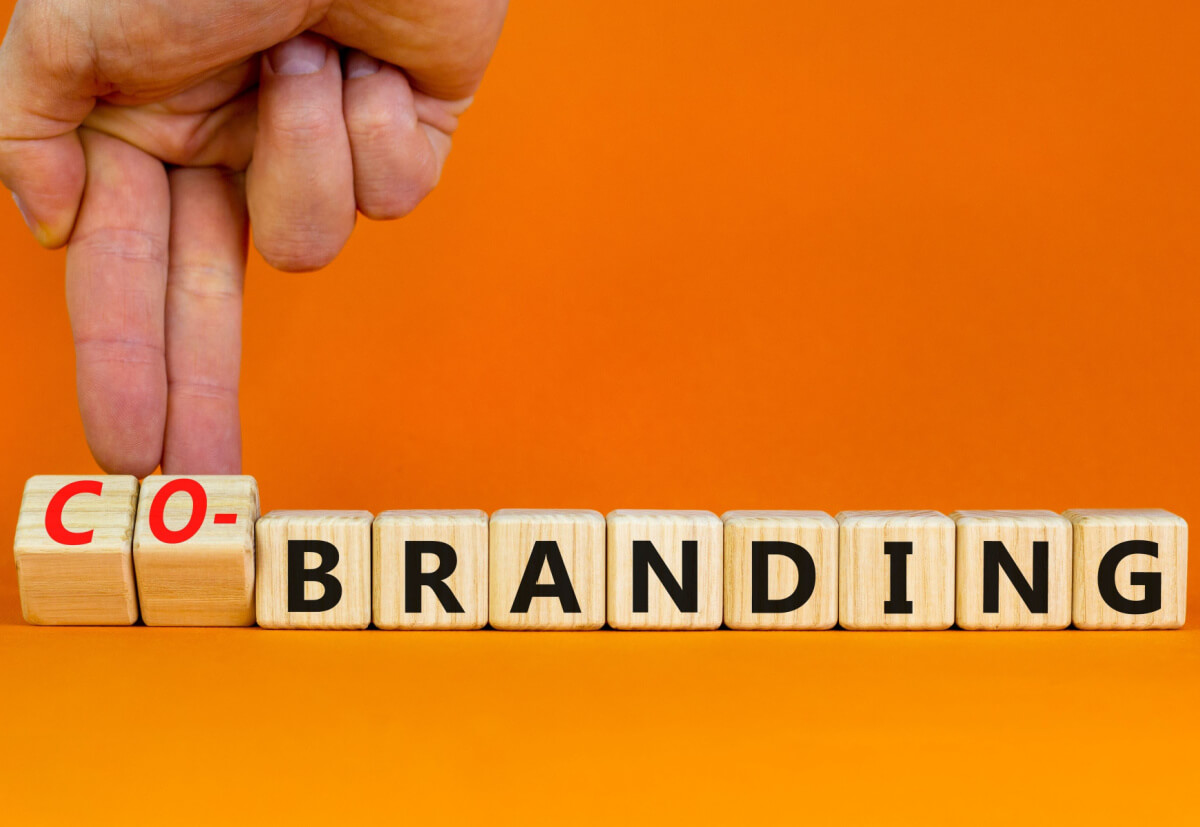
This is the point where collaborations and branding come together. Co-branding occurs when two or more corporate names are linked to the same item. For instance, Uber and Spotify collaborated on the “soundtrack for your ride” campaign, allowing users of both applications to customize the music playing during their rides.
More than ever, companies are looking at new ways to expand their market share and interact with potential customers. In order to execute a creative and effective campaign, many marketing strategists are considering collaborating with another company.
To put it another way, a co-branding plan will launch a new good or service on the market. The traits and key capabilities of the two cooperating brands then serve as the foundation for this product’s or service’s qualities. Co-branding can be a very powerful activation that encourages both businesses to behave jointly rather than separately. Attracting potential customers for each brand helps to increase reach, recognition, and revenue potential.
- Advantages of Co-branding
- Both brands will profit when instructions are followed, and execution is excellent.
- Each business is introducing a new product line that is intended to appeal to its existing clientele while also bringing in new customers.
- When deliberately and efficiently carried out, businesses increase brand recognition and maximize exposure.
- When a company partners with a reputable, aspirational brand, they gain credibility and respect.
- Co-branding enables each involved partner to effectively double its advertising expenditure, boost revenue, draw in new clients, and share risk.
- Disadvantages
- Co-branding is based on collaboration, which may not always work well when two very different cultures come together.
- The agreement necessitates a great deal of confidence, strict adherence to the rules, and resource sharing.
- Most essential, marketers must take into account how consumers will react to this recently formed collaboration. If businesses don’t show a seamless, logical relationship, brand images may clash, and target segments may be misled.
3. Re-branding
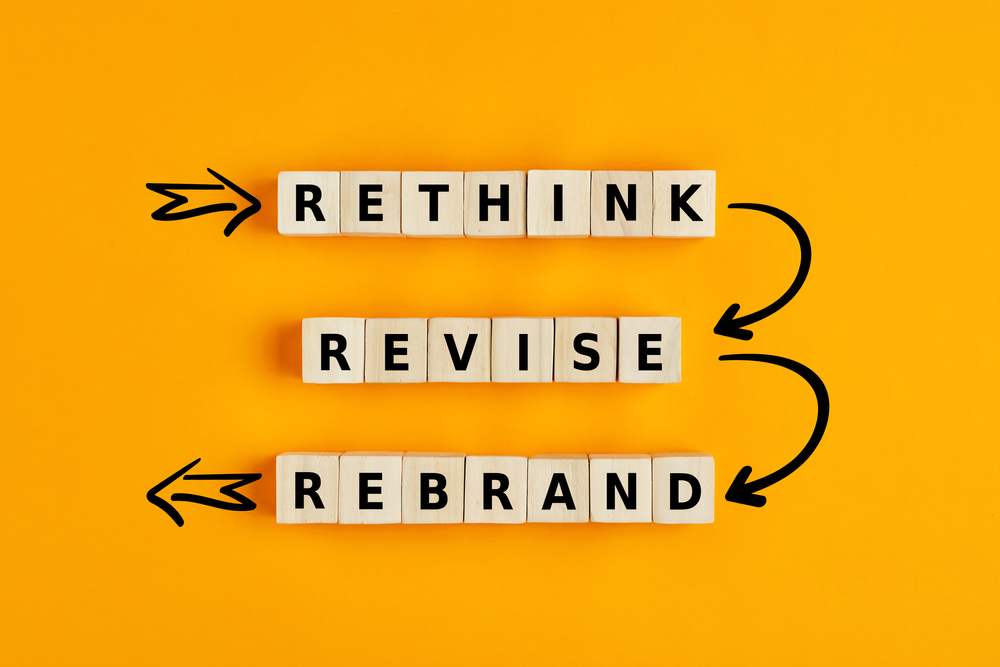
Branding is probably the last thing on your thoughts when you’re first starting your firm. After all, it’s challenging to sit down and browse fonts while you’re still attempting to identify your target audience.
- The Motives for Re-branding
- Re-branding is difficult and fraught with danger.
- Look at Uber to see that not even well-known brands are immune. 44% of individuals still didn’t know what Uber’s logo stood for after it changed.
- In the end, being aware of the dangers associated with re-branding will help you decide whether or not you’re undertaking it for the appropriate reasons.
- If you’re considering re-branding your company because sales have been sluggish or brand awareness campaigns don’t seem to be working, you might want to think twice. These problems could be resolved by developing a new marketing strategy or carrying out market research to determine the root of the problem.
- Re-branding, however, can be the best course of action if you’re thinking about it since your company’s vision, mission, values, and target market are no longer represented in your brand.
There are a few additional significant causes you might think about re-branding, such as:
- Novel Areas: If you’re entering new international areas where people won’t recognize your current logo, messaging, etc., you might need to update your brand.
- Market Realignment: Because brands are created to connect businesses with their consumers, if you reposition your company to focus on a completely different customer profile through a change in product, location, pricing, or promotion, your brand will need to change along with it.
- A Fresh Philosophy: Every choice you make, especially those involving your brand, should be guided by your company’s mission, vision, and values. You must reassess your brand if your MVV are changing and pivoting your company’s path with them.
- Acquisitions and Fusions: When two businesses merge, two brands merge with them as well. You can’t merely let both brands compete if your company was acquired by or merged with another company. Confusion can be avoided, and trust can be increased by creating a new brand that represents the new entity.
- Seeking Recognition: Jumping into a redesign is the incorrect option, regardless of whether sales have been struggling or marketing efforts to increase brand awareness aren’t working. If you don’t have the sales and marketing plan to keep the buzz going, you’ll, at most create some temporary buzz.
Re-branding Techniques
- Modify Your Logo: Changing your logo is one of the key re-branding tactics. Your clients will be informed that your brand’s identification has changed through the use of a new logo. You can make it more streamlined, use various colors, etc. The major justification for changing your logo is to ensure that it complements the new identity you’re promoting through the re-brand.
- Brand Positioning Change: It’s crucial to adjust your brand positioning after changing your logo. You cannot simply alter your brand’s colors and emblem and go on. Whether it’s your purpose, values, or vision, the content you’re promoting needs to convey a certain message. Your customers will be informed of your new mission, values, or vision via a change in your brand positioning.
- Make Fresh Advertising: It’s time to start creating fresh adverts and content with this messaging in mind when you decide on your logo and messaging. The changes to your brand and their implications for customers should be made very obvious in these advertisements. This can aid in expanding your audience and attracting a new population.
After learning all a re-brand comprises, it’s time to decide if and how to re-brand your own company. These methods can assist you in determining your best plan for creating a brand that succeeds this time, whether you choose to redesign your logo, website, messaging, or all of the above.
4. White Label Branding

White labels and private labels are frequently used synonymously (however, there are subtle nuances). When a product or service employs “white labeling,” it substitutes the branding requested by the customer for its own brand and logo on the final product. For instance, if you visit a grocery shop like Walmart, you’ll see that the Great Value brand is used to sell a variety of goods. Does this imply that Walmart manufactures each of those goods? No way! They have a number of businesses that currently supply those goods and are willing to package them for Walmart in Great Value packaging as opposed to their own.
What is the Process of White Label Digital Marketing?
White-label branding a product for Walmart is undoubtedly very different from white-label digital marketing! When your business purchases services from a white-label company and offers them to the client under your brand name, this practice is known as white labeling in the digital age. It’s not like the buyer picks up an item, adds it to their shopping basket, and then proceeds to the checkout.
Some private label companies ask you to serve as a go-between between them and the customer because they only handle back-end work (that affects your profits, make sure to read about our white label pricing). That’s it! The business is set up to be (and prefers to be) a white-label digital marketing supplier for clients. Twenty percent of our white-label partners exclusively utilize us for back-end work that they supply to the client, while about eighty percent of them use us in a front-facing capacity. With the front-facing concept, where your customer can speak with the experts working on their marketing initiatives, we can offer a far better customer experience.
Support for White Label Sales
When you collaborate with that Company, the sales process begins with you. You will get in touch with your professional Digital Marketing Strategist when you have a prospect who is interested in the various digital marketing services that we are offering on your behalf.
- Our Relationship is Growing: You will need to go through the process and comprehend what the customer experiences when we have our first few clients together. But after two or three months of getting to know you, we intend to take over so you can concentrate on your main business and generate new revenue.
What Benefits are There?
- Less Layering: Have you ever been treated unfairly? You hear that someone needs to ask someone else, who then needs to ask someone else to find the solution? After a few days of waiting for an answer, you find out they still aren’t sure. For the customer experience, this is not ideal.
- Simple to Scale: Whether you have one client or 5,000 clients doesn’t matter. You may scale this with the front-facing paradigm without using intermediary Account Executives to handle communication. The client’s billing will be the only ongoing concern for you.
- A Longer Customer Life Cycle (LTV): One of the most crucial Key Performance Indicators (KPIs) we track is customer retention! We have repeatedly demonstrated that we can keep a client’s business for a lot longer when we are face-to-face with them! As opposed to the industry norm of merely keeping a client for a few months, our typical retention rate is measured in years.
5. Private Label Branding
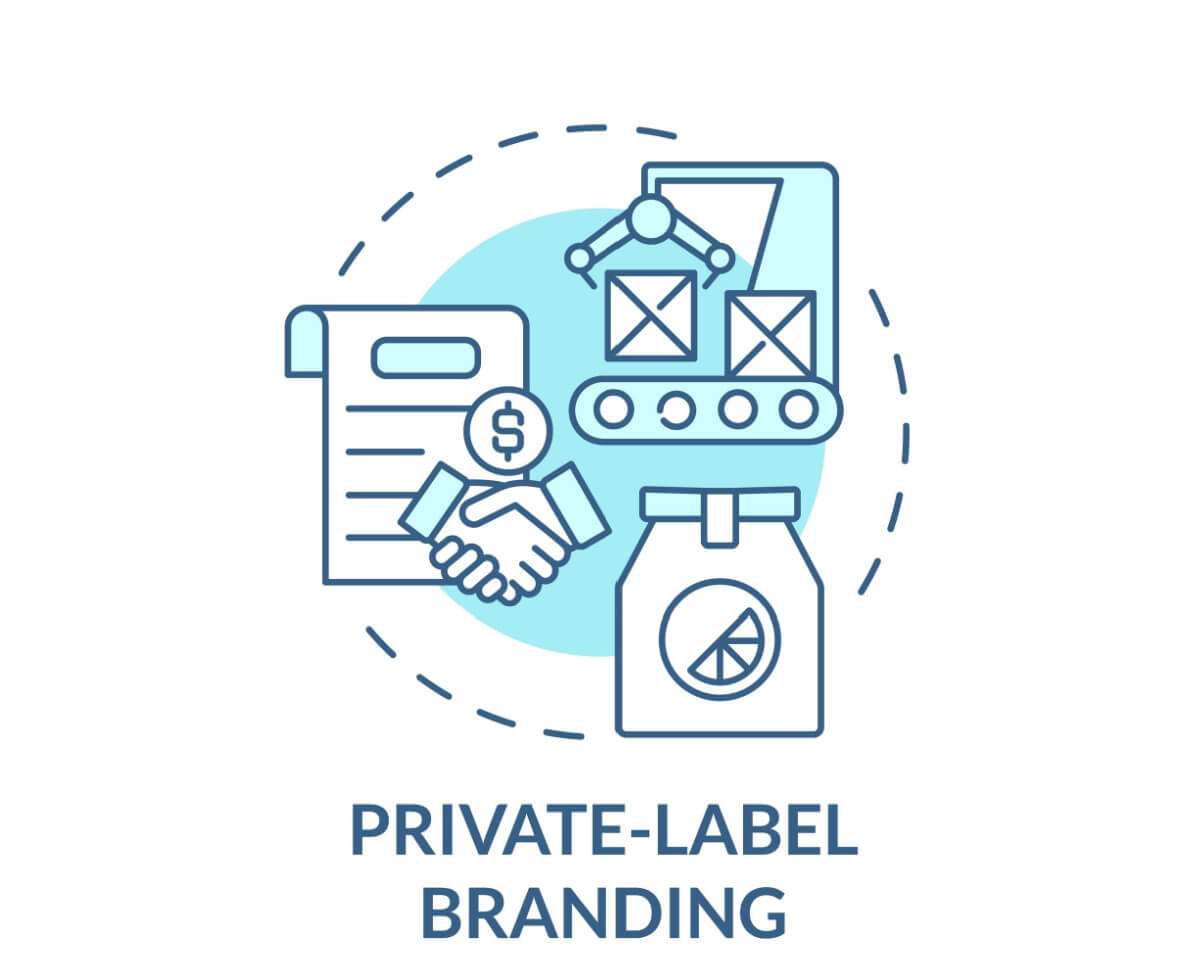
The majority of retailers, both offline and online, purchase their goods from suppliers. There aren’t many companies that produce and market their products directly to customers. Although that sales channel method is still not very prevalent, it is becoming more and more popular.
Many businesses sell items under a different name or brand than a supplier of video conferencing services or another SaaS service. If they don’t spend money making private label goods, that is. If you’re not familiar with the phrase, keep reading. We’ll go into detail about these products. Then, we’ll list their noteworthy advantages and disadvantages.
Definition of Private Label
A product sold under a retailer’s own brand name is known as a private label product because it was developed by a third party.
Everything related to the product or items are under the retailer’s control. That covers the product’s specifications, it’s packaging, and everything else as well.
The four most notable are as follows:
- Adaptability: Some retailers get all of their merchandise from suppliers. They depend on them, as a result, to respond to market demands. The suppliers must modify their offerings if customers start to want new lines or new features. This could take some time.
- In command of Production: Retailers have more leverage in all situations, not just those that call for a quick change. Private labeling also offers better production control, which is a benefit.
- A Say in Pricing: Retailers are in charge of the entire supply chain when using private labeling. To ensure the most profitable pricing, they determine and manage production costs. Products are created in a way that ensures the healthiest profit margins at the end.
- Possession of Branding: The problem with selling branded goods is that customers don’t develop a passion for your business. They form loyalty toward the producers, not the distributors, of their preferred goods. Your name and logo are shown on the packaging of private-label goods.
Private Labels’ Drawbacks
The worlds of e-commerce and retail are never clear-cut. Private label branding has a lot of benefits, but there is also a huge potential drawback.
- Establishing Brand Loyalty is Difficult: In theory, branding your products is a fantastic concept. However, in reality, creating considerable brand loyalty can be challenging. After all, your private label lines frequently face off against well-known brands in a particular market.
Both online and brick-and-mortar shops have the option of using private labeling. Here, the vendor has product lines produced to market and sell under their own name and branding. The main benefits of this are the authority it offers retailers. They have control over branding, price, and production. But going up against well-known businesses and brands is no easy task.
6. Product Branding
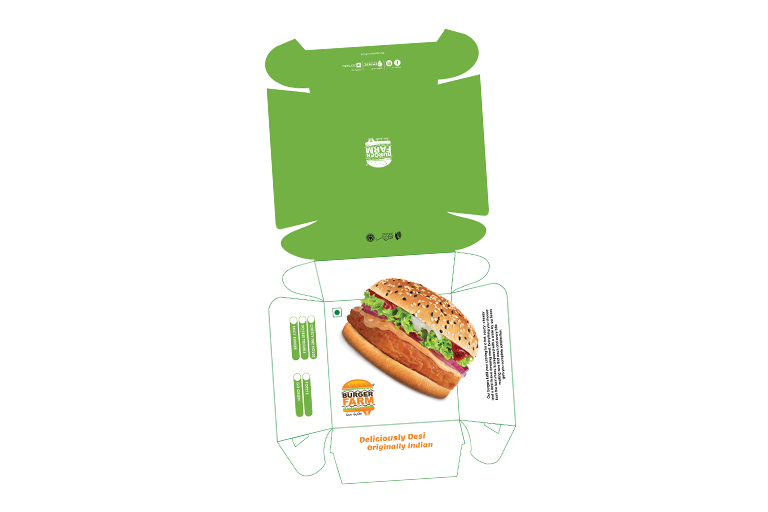
Product branding is a crucial tactic for assisting customers in recognizing and distinguishing one product from another. It can be successfully implemented and used by businesses of all sizes. Because it gives your products a life and personality of their own, product branding is a crucial component to take into account as part of a larger branding plan.
Effective product branding attracts and retains customers. On the other hand, poor product branding is, at best, perplexing and, at worst, can be off-putting, actually damaging sales and recognition.
How do You Design a Winning Product Branding Plan?
Making a fantastic product that satisfies all of your clients’ needs is challenging enough; building a brand for that product is even more challenging. But don’t worry, we’re here to help. Make sure to create your own checklist as well, but take some inspiration from the suggestions below. All successful firms have their own checklists when developing new products with their own product branding strategies.
Keep a Clear Vision in Mind
Dare to be different. Since isn’t it the purpose of a product branding strategy? Making a product branding plan that will make you fit in is useless. A clear vision is a crucial component of any recognizable brand.
Pay Attention to Your Voice and Messaging
Do you have any Lush toiletries? To acquire one right away, but don’t sniff it; instead, read the label. Their tone of speech has been honed, and they are displaying it even—or especially—in the fine print.
7. Corporate Branding

Establishing your brand identity will help you stand out from other businesses by increasing your audience’s recognition and ability to relate to you. You may connect with clients and position your business as a reliable one in the market by developing a corporate branding plan. This can make you stand out from the competition, promote your brand, and build client loyalty.
Corporate branding is the process of presenting a company’s image or identity to customers. Typically, a company’s brand reflects its values, brand voice, and messaging. Building corporate brands is a common strategy used by marketing experts to show how they want the company to be seen.
The Value of Corporate Identity
Corporate branding is crucial because it enables you to express the personality, traits, values, and goals of your company. Customers may decide to select your good or service over competing ones as a result of their admiration for your mission, commitment to your cause, and shared values. You can employ emotional marketing, which encourages clients to trust, rely on, and commit to your business when you can relate to the brand. Strong client retention rates, excellent referral rates, and improved revenue can all be a result of creating these strong ties through corporate branding.
8. Cultural Branding

Cultural branding: What is it? Although “brand culture” and “business culture” are terms you may be familiar with, “cultural branding” is a little less well-known. The idea primarily relates to giving your business the “lifestyle” you want to impart to clients and staff.
The only way to guarantee your success as a modern firm, as any great branding company will tell you, is to develop deep connections with your clients and employees.
According to the Harvard Business Review, in the age of social media, when clients are always connected to endless businesses, standing out in today’s digital world is becoming more and more difficult.
According to HBR, brands are most successful when they achieve “cultural” breakthroughs by making pertinent connections with their target audience.
Through cultural branding, businesses support an “ideology” or set of beliefs that resonate with their target market and foster deep emotional bonds.
Importantly, cultural branding isn’t simply something businesses employ to interact with potential customers; it can also play a crucial role in luring top personnel. If you’ve ever looked into the tactics employed by prominent firms to increase hiring potential, you’ll realize “company culture” is a key consideration.
9. Ingredient Branding

To raise the value and brand recognition of your company, you can use a variety of marketing techniques. Traditional marketing techniques include things like advertisements, billboards, and events. Then there are digital marketing techniques like community involvement, contests/giveaways, and social media advertising.
Ingredient Branding – What is It?
An aspect of the business is branded as a separate entity as part of an ingredient branding marketing plan. The parent firm gains more value as a result, and its product or service appears to be better than that of its rivals. Without you realizing it, you have likely witnessed the implementation of this tactic numerous times in the past.
Can Ingredients Branding Benefit Your Business?
If your company isn’t well-known enough to be labeled as an ingredient, it could still be advantageous to use an ingredient in your good or service. You may guarantee a level of quality that people are already familiar with by including a well-known ingredient in your business concept.
Offering a well-known component in your good or service can be a wonderful approach to attracting customers who already use that component in other goods.
10. Umbrella Branding

Brand marketers are always looking for new approaches to gain and maintain a competitive advantage. Gaining market share will result in effective and appealing growth. This can be accomplished by introducing new products to the market or raising the sales volume and profit margin of already-available goods.
What is Umbrella Branding, and How Can It Help You Grow Your Brand?
Brand marketers are always looking for new approaches to gain and maintain a competitive advantage. Gaining market share will result in effective and appealing growth. This can be accomplished by introducing new products into the market or raising the sales volume and profitability of currently available products.
Both the acquisition of new customers and a rise in the rate of repeat purchases are necessary to draw in new clients and improve sales volume. The corporation can adopt this rather easily. The cost of marketing and advertising, as well as competitive variables, make it relatively difficult to boost the bottom line of an existing product. Increasing customer brand loyalty is the best method to boost the bottom line.
Brand extension techniques have been developed to better integrate new items into the market due to the tremendous cost and the extremely high failure rate of new product creations, particularly in fast-moving consumer goods (FMCG) categories.
11. Individual Branding

Every product receives its own portfolio through individual branding under a distinctive brand name. Individual branding differs from corporate or family branding, which offers things a well-known brand name. Every product that has particular branding benefits from a distinctive image and identity that helps with market advertising. Every product on the market is then placed; as a result, enabling a company to position its brands appropriately.
The Meaning Of Personal Branding
Individual branding is a marketing tactic in which each of a company’s products has its own distinctive brand name. Giving each brand its own name aids in creating a distinctive product image in the marketplace.
Personal Branding: How Individual Creation is Growing
To address the difficulties a parent brand in crisis was experiencing, the need for individual branding arose. The requirement for individual recognition of newly introduced products in the market gave rise to the term “individual creation.”
12. Family Branding
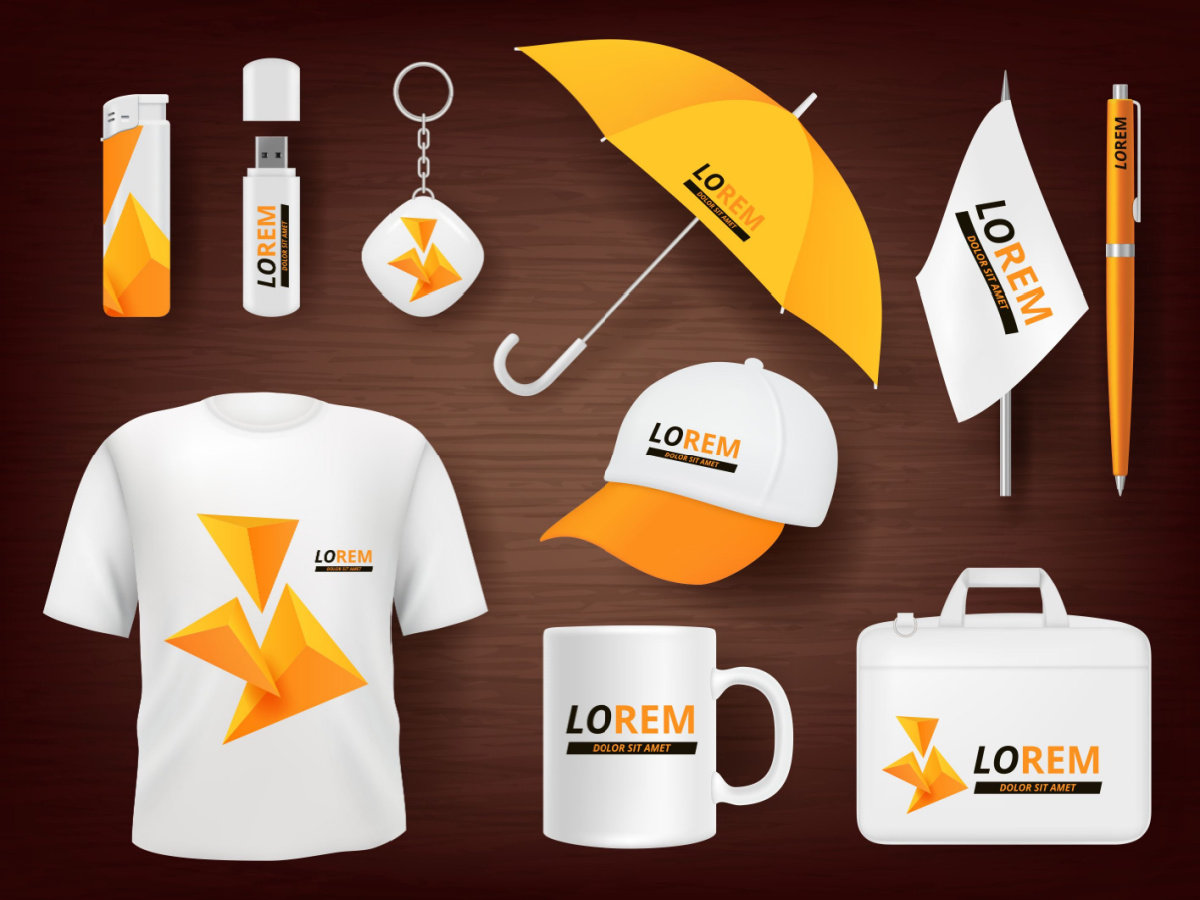
A group of items sold under the same brand name and frequently with a unified logo is referred to as a brand family in the marketing and promotional industry. For instance, L’Oréal markets lotions, shampoos, and other beauty items under the same name to the same customer base.
As an alternative, individual branding includes providing each product with a distinctive name and logo. To increase a company’s sales potential, family branding includes grouping several items together, frequently within the same specialty.
Using family branding is a great method to win over customers. The equity of the business rises as consumers get more familiar with it thanks to its wide choice of items.
There are a few decision-based theoretical ideas that help explain how family branding functions as a marketing strategy.
For instance, the psychological theory known as “categorization theory” contends that buyers tend to group things into categories and link them to particular brands. Colgate is known for its dental products; thus, it seems natural that they would market mouthwash, toothbrushes, toothpaste, and other related items.
13. Visual Branding
An essential component of your marketing approach is visual branding. It consists of all the visual components, such as your logo and business card font that are used to represent your company. The overall look and feel of your brand is created by the interaction of each component.
First and foremost, it serves to emotionally engage your audience and communicate your brand essence.
Next, your audience will discover more about your company thanks to your brand’s visual identity. Visual signals help prospective buyers comprehend how your business fits into the market.
What Distinguishes Your Brand?
What your clients can anticipate from your goods or services.
Finally, your visual branding strategy will assist connect the disparate parts of your brand through recurrent visual cues.
Shared visual branding elements will let your target customer know that they are reading something from your company, whether they are reading an email newsletter, an Instagram post, or a brochure.
14. Packaging Branding

Designing a product’s packaging includes making the product’s exterior. This covers decisions made on the type of material and form, as well as the graphics, colors, and typefaces used on the packaging, boxes, cans, bottles, and other types of containers.
Yes, packaging branding is a useful tool. However, it goes beyond that. Packaging conveys a message, just like good design does. Additionally, it is a sensory encounter that physically engages us through sight, touch, and sound.
Customers form their first opinion of your brand based on your packaging before they ever see and use your product. The actual container or covering that carries your product and embodies your brand identity is known as brand packaging.
As a result, it serves as a crucial point of contact for building relationships with customers and is a significant addition to the brand experience. In fact, 40% of online buyers claim that branded packaging increases their likelihood of telling others about a product.
15. Employee Branding

The function of an organization nowadays is more important than ever because of the transformation brought on by improved technologies. It’s no longer a matter of “perform your job and get paid.” Thanks to the concept of employee branding, a company’s most crucial asset—its reputation—is in the hands of its employees. Employee branding, or how your employees view you as an employer, can be defined as an organization’s reputation among its workforce. It can increase a company’s reputation in the talent market, allowing you to attract and keep brilliant workers who share your company’s culture and values. A strong employer branding approach can draw in excellent candidates, which will result in excellent hires and stronger, more organic employee engagement.
Employee engagement is the process of fostering a sense of appreciation for one’s job, leading to increased productivity and involvement. Employer branding is the process by which business markets itself to prospective employees, much like a business might market its goods. You might believe that these concepts are incompatible.
16. Emotional Branding

To influence how your brand is viewed by your consumers, emotional branding is used in mobile apps. Read our tutorial below to learn how you can utilize emotion to strengthen connections with your users or skip to our infographic to get the gist.
The process of establishing a link between a consumer and a brand or product by appealing to their emotions is known as emotional branding. Marketers accomplish this by producing content that speaks to the emotions, egos, wants, and aspirations of their target audience. Emotionally triggered marketing can appeal to people’s irrational subconscious desires for love, power, emotional stability, and ego pleasure through emotional branding.
Emotional Advertising Versus Emotional Branding
Despite the fact that it could seem self-explanatory, emotional advertising is a sophisticated technique, and when applied incorrectly, it can mislead your audience. However, using emotional appeal and giving it serious thought can make emotional advertising quite powerful.
In advertising, emotion might be used more overtly in a particular commercial or campaign. Each emotional ad makes a contribution to the emotional branding strategy; they act as the unique pieces of the brand’s structural integrity.
17. Audio Branding

Simply said, audio branding is the process of using sound to establish, strengthen, and define a company’s identity. Companies may use one, all, or a combination of these components across multiple marketing channels. If you can hear it, it can help your company stand out.
Whether it be online, over the phone, in a podcast, at an event, in a store, or in any other auditory channel, whenever a business employs music or spoken word as part of a consumer experience, they are engaging in audio branding.
Sonic logos are the easiest method to convince a potential consumer to pay attention to what you have to say since they succinctly and memorably communicate corporate identity. Additionally, there is a higher likelihood of gaining market dominance across numerous receptive channels as a result of the expanding opportunities to use this feature.
18. Event Branding
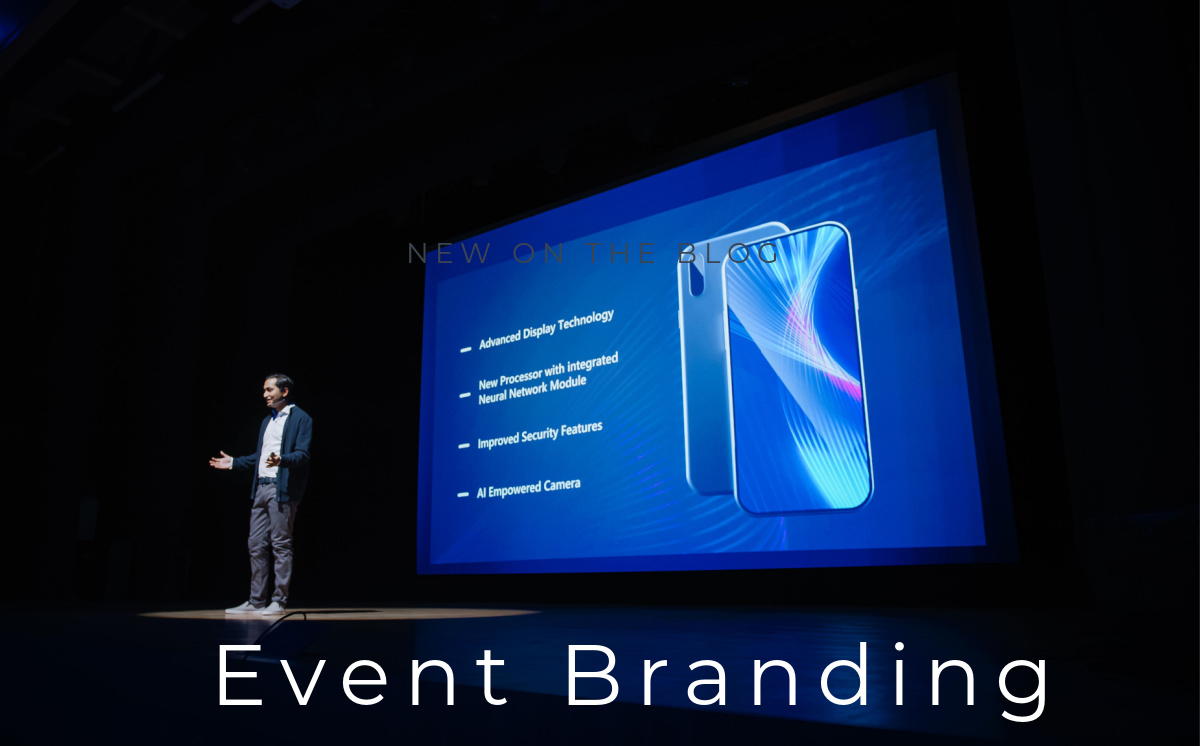
What distinguishes a good event from the best summer event? Some will mention the food, while others will mention the entertainment. When you stop to think about it, it all comes down to standing out from the competition and giving each participant a unique experience. The event’s brand ultimately determines its perception and reputation.
A corporation or group simply creates a name, symbols, colors, messaging, and imagery that distinguishes a distinct identity for an event as part of event branding. The event brand must differentiate itself from the competitors in order to stick in the minds of its intended audience.
The onsite look and feel, as well as the marketing components, should all work together to provide a seamless experience across all of the event’s touchpoints. Overall, the brand of an event communicates a narrative and says a lot about the company hosting it.
19. Body Branding

Body branding involves using various objects with extremely low or extremely high temperatures to mark the skin. A third-degree burn that has destroyed the nearby nerves has left a scar on the design. However, the outcome won’t become apparent until after the wound has healed.
- Striking: Hot stainless steel strips are applied to the flesh.
- Through the use of an electrode tip and a 2000°F electric current, tissue is killed by electro-cauterization.
- Lit incense is utilized in this instance of moxibustion.
- Laser branding is printing a design on the skin using a laser. For more intricate designs, this is the most precise approach to use.
- Branding Freeze:
- The skin is frightened with extremely cold liquid nitrogen rather than being marked with heat. Although this is the least common surgery, it has the advantage of not leaving keloid scars.
20. Influencer Branding

Since most opinion leaders draw their following from social media platforms, influencer marketing, and social media marketing are closely intertwined. Given that social networks are used by half of the world’s population, this channel allows you access to a sizable audience. Even better, influencer marketing gives you access to audiences that conventional advertising is unable to reach. Although two-thirds of customers use ad blockers, the same people voluntarily follow influencer recommendations. 80% of consumers have made a purchase after hearing about it from an influencer.
Influencer marketing is a practical technique to enhance your marketing approach, accomplish corporate goals, and even reduce costs. Let’s explore influencer marketing in more detail and discover its advantages for your brand.
- development in brand awareness
- enrichment of the content strategy
- dependable lead generation
- Cost-effectiveness
21. Digital Branding

A brand without a presence online is equivalent to a vehicle without tires. It won’t move forward quickly. While traditional, “analog” branding is still used today, it hasn’t exactly gone the way of the horse and buggy. Instead, businesses need a wide variety of digital branding tools to bolster their physical presence. The creative, strategic process of telling potential clients who you are as a company, what you stand for, why they should deal with you, and what they can expect from you is known as branding. Building a brand identity should be your first priority once you’ve launched your business or made your first product.
Through branding, everything you do and how you do it is reduced to a single, enduring essence that people will remember.
With the help of websites, apps, social media, videos, and other online platforms, you can design and develop your brand with digital branding. To build a brand online, digital branding combines internet branding with digital marketing.
Other Important Aspects Of Branding
Branding in-person can be significantly different from branding online since in-person considerations like product placement and props can affect how customers perceive your brand. Customers who shop in person have a more immersive brand experience than those who do so online since they can move about and pick up items. Of course, some aspects of branding are the same in-store and online. These include logos and images that are recognizable.
Importance of Branding

Branding is more significant than you might realize for a company. On the surface, your brand could appear to be made up just of visual components like logos and colors, but it actually encompasses all aspects of your company’s identity. Your personal brand defines who you are.
Although branding has always been crucial to a company, it might now be more so than ever. Social media exposes consumers to new brands every day. While having many alternatives and being able to research them to pick the best one can be beneficial for consumers, it is challenging for businesses.
More People Will Know About Your Company
To aid in their recognition is one of the most obvious reasons why businesses require branding. People will naturally pay attention to your company far more than they would to one without good branding.
Building Your Brand Develop Trust
One of the most valuable assets a company can have is the audience’s trust, but it’s not always simple to earn. A company that lacks essential branding components will find it more difficult to win over customers.
You Can Boost Your Marketing
Without advertisements, your firm won’t be able to grow very much. Advertising and branding are closely related. You’ll need to work on building a brand first if you want to have better advertising for your company.
It’s Excellent for Your Staff
Additionally, branding has importance for your business. Of course, you want your workers to enjoy their time at your business and feel like valuable members of the team. An organization with strong branding will find it simpler to persuade staff members that their work is more than just a job.
Value of Branding

Value of Branding: Given the overall effect it has on your organization, branding is vitally essential. Whether done well or not at all, branding can influence how people view your company, encourage new business, and boost brand value. However, it can also have the opposite effect.
No matter what the company does, its reputation continues to grow
Either a good or terrible reputation can be the outcome. Understanding and utilizing branding only entails taking charge of how that reputation is presented. It is advised to think about branding from the very beginning of your organization for this reason.
Branding raises the value of a company
A good brand can boost a business’ worth by providing it greater clout in the market, which is vital when trying to generate future business. Due to its established position in the market, it has become a more alluring investment prospect. More brands than ever, according to 69% of people, are spreading false information.(https://www.edelman.com/sites/g/files/aatuss191/files/2019-07/2019_edelman_trust_barometer_special_report_in_brands_we_trust.pdf).
Branding brings in new clients
It won’t be difficult for a strong brand to generate referral business. Customers are more likely to transact business with you if your company has strong branding because of the familiarity and implied dependability of using a name they know and trust. Once a brand is well-known, word-of-mouth marketing will be the best and most successful strategy used by the business.
When it comes to advertising, the majority of individuals (74%) steer clear of it. People can avoid even their favorite businesses’ advertisements by using ad-blocking software, altering their media consumption habits, consciously avoiding adverts, or even paying for streaming services. (https://startupbonsai.com/live-streaming-statistics/).
Process of Branding
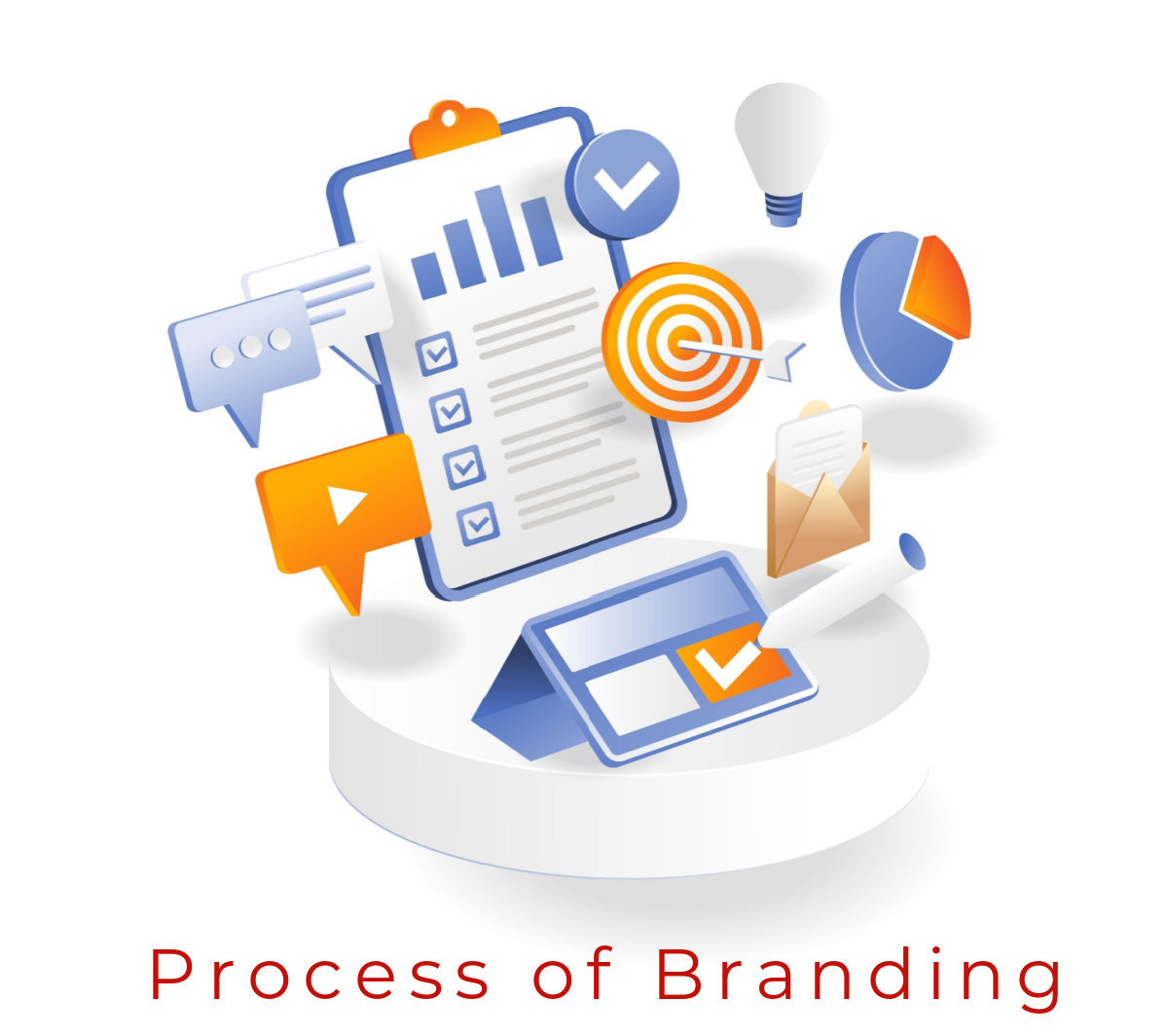
Process of Branding: Before you even start developing your brand identity, you need to ask yourself some important questions, such as who you are and what sets you apart from your rivals. Use plenty of market research and specific corporate objectives to help you find the solutions when they are not always evident.
- Create a brand plan.
- Research the market
- Create a unique brand identity.
- Create a style guide.
- Increase brand recognition
Elements of Branding
Together, these branding components create a brand identity, which designers employ to create powerful, alluring brand designs.
- Every brand requires a logo: In fact, it’s difficult to discover a brand that doesn’t have a logo, making it the most crucial component of branding.
- Color scheme: Colors are a vital component of every brand’s identity. Try to identify which brand each color scheme in the following color swatches represents.
- Shape: Another element of a comprehensive branding strategy is shaped. Not just the forms in your logo but also in the backdrops of your web pages, the layout of your packaging, and even the shapes on your business cards and other stationery.
Branding Guidelines
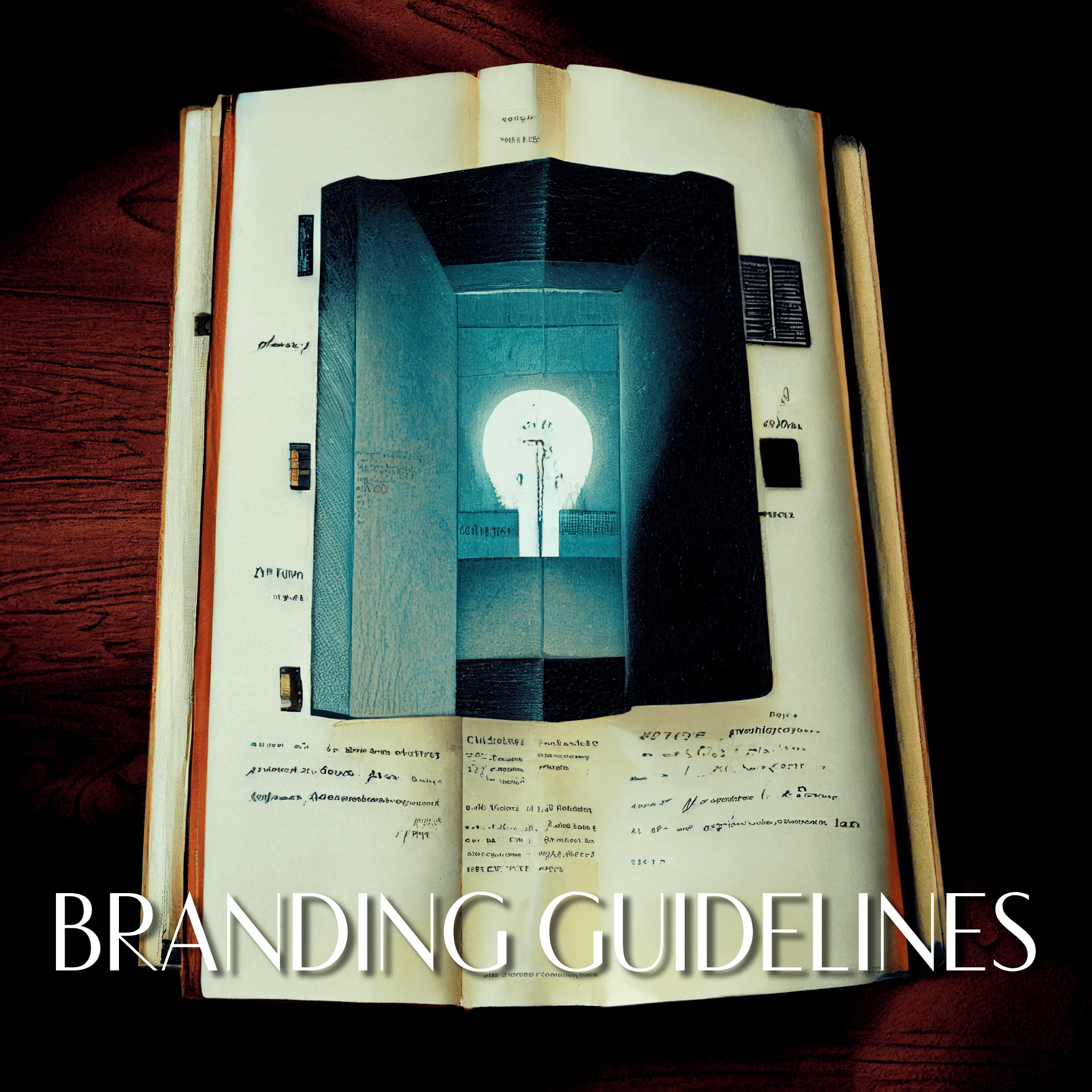
Branding Guideline: A brand style guide is a manual that specifies how an organization should represent itself to the public, including through the use of its logo, font and color choices, photography, and other elements.
Why are brand standards crucial?
Consider your brand identity to be the personality of your business. It’s how people start to recognize and believe in you. You won’t feel like you know someone if they constantly change how they look and act, and you won’t be able to trust them.
Write a goal and vision statement that explains the purpose of your business as well as the direction you want your brand to take.
Identify your target audience and explain why they require you
Make a list of three to five adjectives that best represent your brand’s personality. This will establish the tone for the writing and design.
Values: Establish the principles that will guide all business decisions and actions. Your team will find it simple to stay true to your brand if you have memorable values.
Purpose of Branding

Purpose of Branding: Each product’s branding should be viewed by a firm as a strategic investment. Increasing consumer loyalty, differentiating the product from the competitors, and establishing market leadership should be the top three objectives of brand strategy.
The goal of branding architectures is to maximize the customer’s perception of the product in connection to the brand as a whole and the company’s other products. The product may be branded as a stand-alone item, connected to other items, or just connected to the business overall.
Because services are intangible, branding is challenging in service businesses. Accentuating the company’s employees can be a crucial differentiation that sets the service apart from the competitors.
Branding Structure
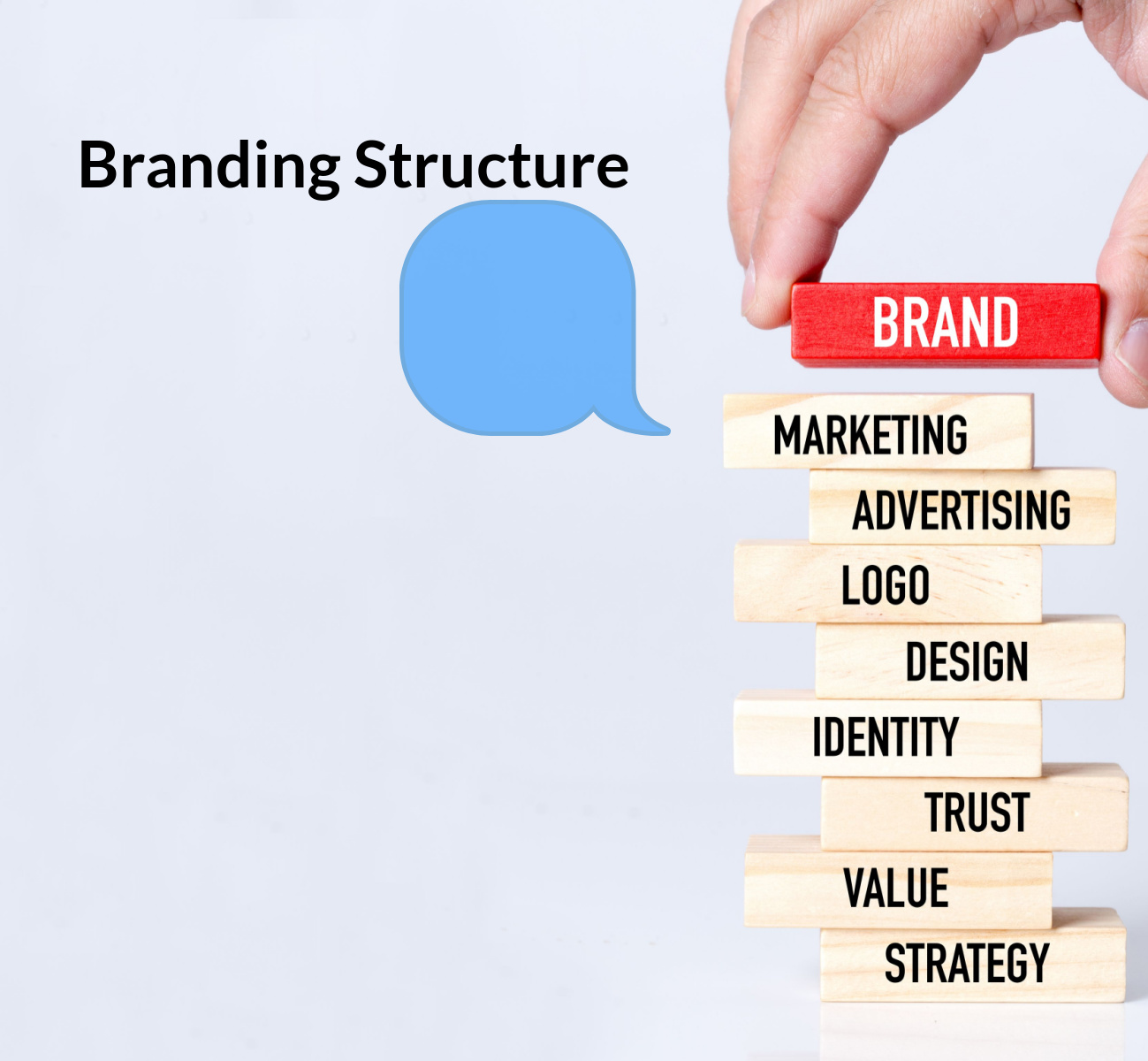
Branding Structure: To make a brand easier for customers to access and relate to, a system called brand architecture organizes brands, goods, and services. It aids in organizing a portfolio of brands so that consumers can quickly determine which brands are related and to what extent. This assists in describing your offerings’ depth and breadth in the manner that you want customers to perceive them.
For the creation of new goods, sub-brands, and brand extensions, well-established brand architecture is a crucial guide. In addition to reminding customers of the value proposition for the entire brand family, it offers a roadmap for brand identity development and design. By doing this, it fully leverages corporate and sub-brands to provide the greatest brand value.
Branding Strategy
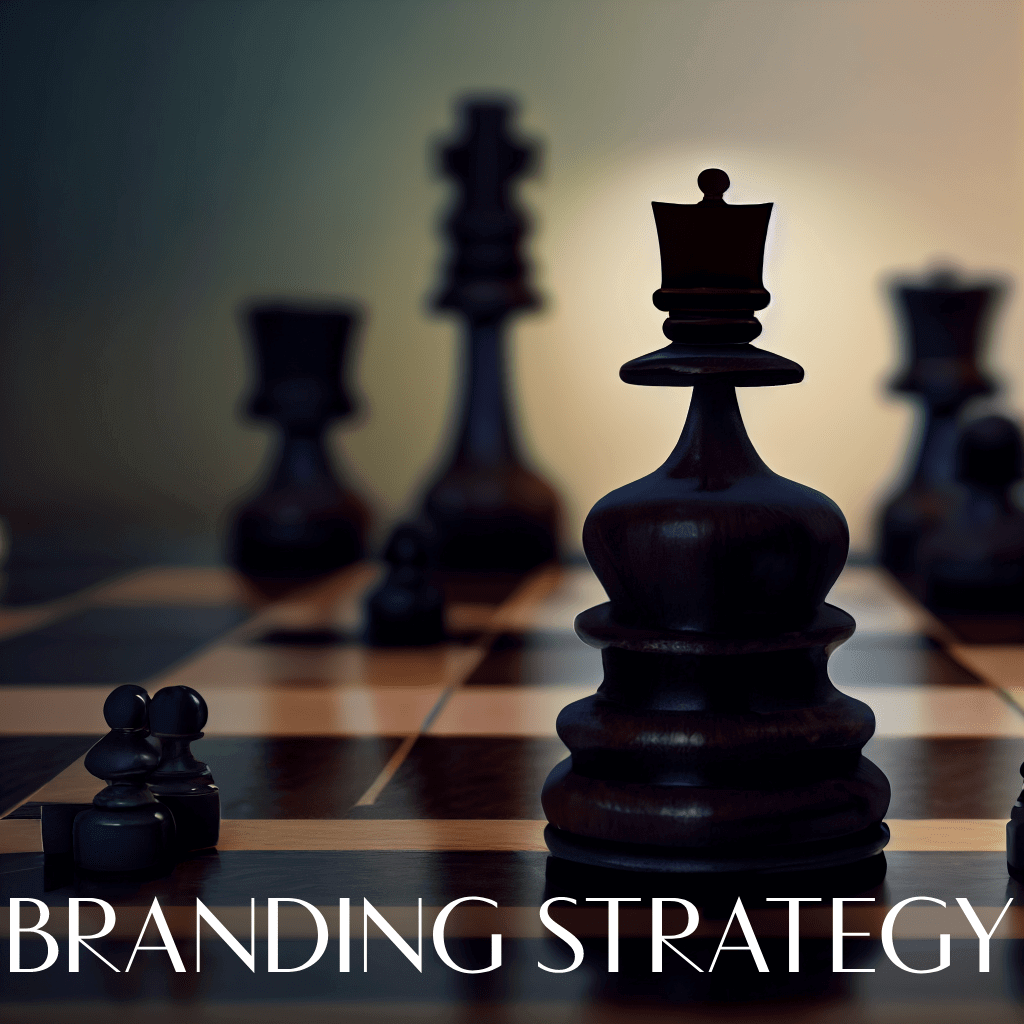
A branding strategy is a framework that dictates how firms interact with customers and differentiate themselves from rivals. The brand of your company extends beyond its name, logo, typefaces, and colors. Consider your company’s appearance and feel, personality, business philosophy, values, and customer experiences as the whole of your brand.
Three essential stages to discovering your brand’s roots
Follow the instructions below to finish building a solid brand foundation and creating a plan to market your brand globally.
- Make the components of a business strategy.
- A business plan is a written document that outlines the objectives and approaches it will take to achieve those objectives.
- Create more accurate buyer personas.
- To create a brand, you must understand who your company serves.
- Investigate brand archetypes.
The concept of brand archetypes, which marketers and companies have evolved from psychologist Carl Jung’s theory of archetypes to characterize the human psyche, may show up in your research on branding.
Therefore, you’re well on your way to owning your distinctive brand once you’ve realized the distinction between your brand and your product, established your idea, and laid out your vision, values, and persona. It should speak directly to your target market, resonate with them more than the competitors, and fill a market niche due to quality, tone of voice, service, or any other characteristic of your brand that you believe distinguishes it.






